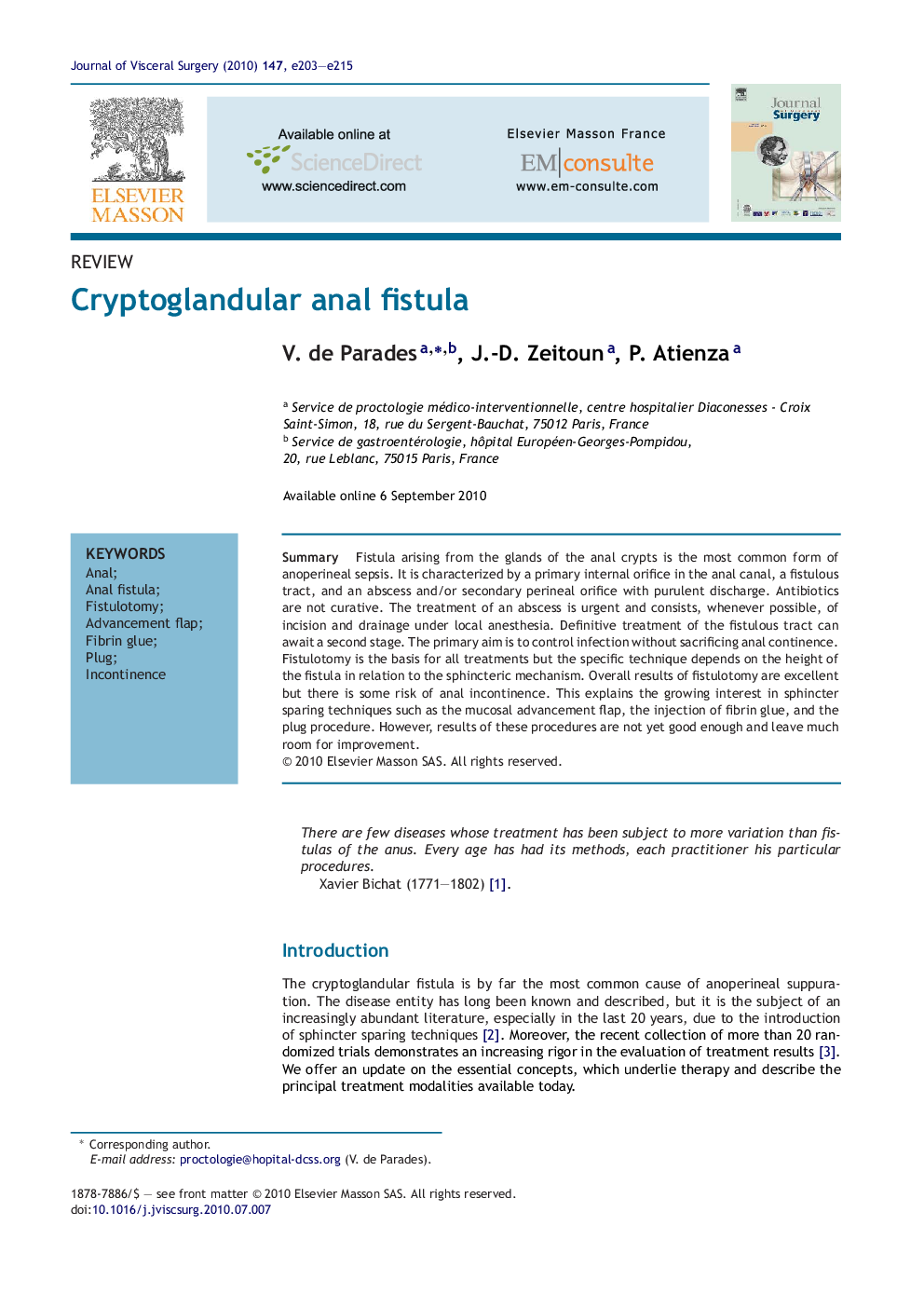| Article ID | Journal | Published Year | Pages | File Type |
|---|---|---|---|---|
| 3316218 | Journal of Visceral Surgery | 2010 | 13 Pages |
SummaryFistula arising from the glands of the anal crypts is the most common form of anoperineal sepsis. It is characterized by a primary internal orifice in the anal canal, a fistulous tract, and an abscess and/or secondary perineal orifice with purulent discharge. Antibiotics are not curative. The treatment of an abscess is urgent and consists, whenever possible, of incision and drainage under local anesthesia. Definitive treatment of the fistulous tract can await a second stage. The primary aim is to control infection without sacrificing anal continence. Fistulotomy is the basis for all treatments but the specific technique depends on the height of the fistula in relation to the sphincteric mechanism. Overall results of fistulotomy are excellent but there is some risk of anal incontinence. This explains the growing interest in sphincter sparing techniques such as the mucosal advancement flap, the injection of fibrin glue, and the plug procedure. However, results of these procedures are not yet good enough and leave much room for improvement.
